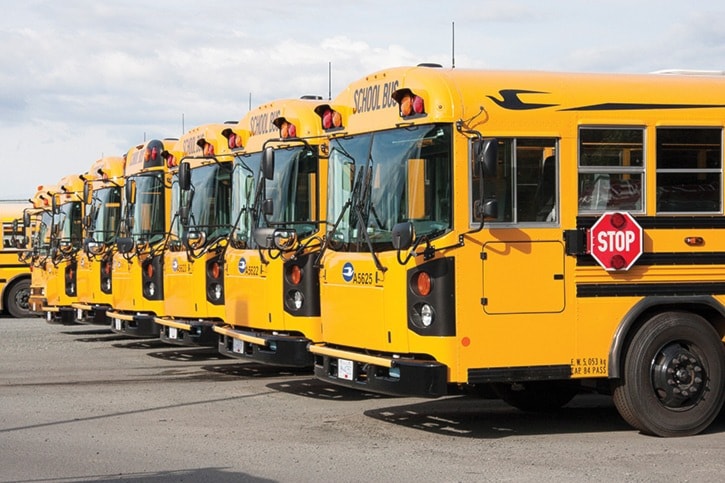The Sooke school district and other districts in the province have until Sept. 30 to apply for a new $14.7-million fund to assist with student bus services. Those additional funds could see SD62 waive its fees for students who ride the bus to school.
“It is really, really good news for us,” said Bob Phillips, SD62 board of education chair.
Education Minister Mike Bernier announced the fund last Wednesday. It requires districts to submit a plan on how the money will be used to “boost transportation services,” by adding new routes, improving disability access and bus stops or improving access to public transit. But the criteria also include “funding existing transportation services and inviting the savings into enhanced student services,” according to the ministry statement. That would make the grant effectively part of the district’s general revenue.
To qualify, school districts would have to drop fees charged to parents for school bus service. Fees are charged in eight districts across the province, including Sooke, Saanich, Cowichan, Central Okanagan, Chilliwack, Langley, Maple Ridge and Peace River North.
 While bus fees were originally slated to increase $50 to $225 per student this school year in SD62, Phillips noted that now parents will be able to put the money to other uses.
While bus fees were originally slated to increase $50 to $225 per student this school year in SD62, Phillips noted that now parents will be able to put the money to other uses.
The deadline for students to sign up for bus services was in June, and many families have already paid the fee. The district is still working on how that fee will be refunded, Phillips added.
“We went through all of this work … Maybe, if it had been done earlier it would have saved some hassle,” he said.
But the funding isn’t set in stone just yet. The school bus funding formula is weighted towards districts with large rural areas. Cariboo-Chilcotin is eligible for the largest amount at $739,024. The Sooke school district’s potential share is estimated to be $358,365.
But as Phillips noted, the local district is working off a formula that estimates growth of roughly 300 students this school year. If that’s closer to 400, or a larger number of the additional students require school bus transportation, the district’s busing costs could drastically change.
“Is that $358,000 embedded in concrete?” he asked, noting that the district would have a better idea of their enrolment numbers by the Sept. 30 deadline. “We’ll know more about that when the board has a chance to look at the spreadsheets.”
If the fund doesn’t cover the district’s transportation costs, some creative solutions could be required. Students that require additional or specialized services, such as those participating in academy programs or international students, may still be charged a fee for busing. But Phillips said the district would have to look at whether the administrative costs involved would make charging this small group worth it.
The district could also impose walk limits, meaning students living in areas within walking distance of schools would be charged for taking the school bus. But Phillips noted the district has never taken such action in the past and isn’t too keen on pursuing it now. “We want our kids to get to school safely,” he added.
While Phillips is cautiously optimistic about the new fund, he has some concerns. “It sounds like it’s not indexed to inflation,” he said, adding that the funding may not increase based on growing ridership in future years. While that is not a problem for districts that are seeing their numbers decline, it is a big concern for the Sooke district, with the West Shore continuing to grow. “You can start to see how the math looks scary to us … We’re growing and 25 per cent of our kids (already take the) bus.” But he noted, “at least this deals with the here and now.”
As for how the ministry is addressing concerns and working with the districts, Phillips was impressed to receive a personal call from Bernier. “He called all of the board chairs.” Phillips couldn’t remember that ever happening during his nearly 20 years as a trustee. “It’s nice to be able to have that contact with the ministry. We’d like to see more of that.”
He noted the ministry went through extensive consultation with the different districts, and spent months working out the details on this new fund. “The ministry did a lot of work on this,” he noted.
-With files from Tom Fletcher
katie@goldstreamgazette.com
